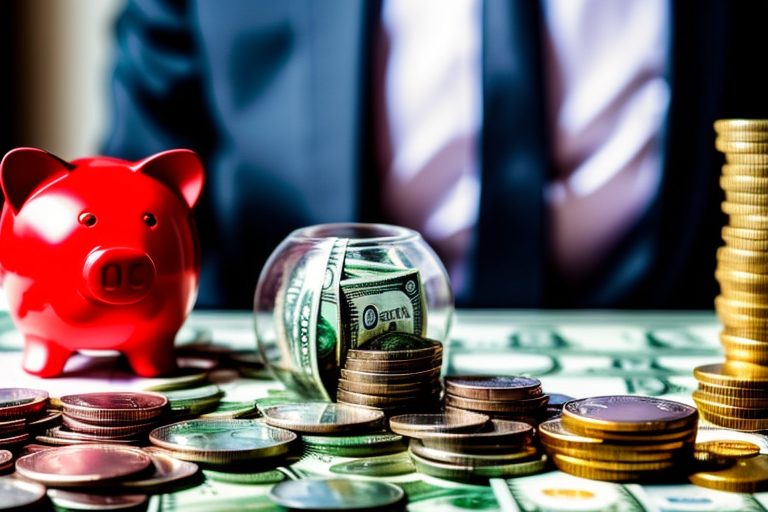Why You Need an Emergency Fund
In today’s unpredictable financial landscape, having an emergency fund is crucial. Life can throw unplanned expenses your way, such as medical bills, car repairs, or job loss. Without savings, even a minor setback can spiral into debt, impacting your long-term financial health.
Consider this: studies show that individuals who rely on credit or loans after a financial shock often struggle to recover. An emergency fund serves as a safety net, helping you navigate these challenges without accruing debt.
Benefits of Having an Emergency Fund
Establishing an emergency fund comes with multiple advantages, such as:
- Financial Security: A safety net that protects against unexpected costs.
- Peace of Mind: Reduces stress by fostering confidence in handling emergencies.
- Avoiding Debt: Helps you steer clear of high-interest loans or credit cards.
- Achieving Financial Goals: Protects your long-term savings by ensuring you don’t deplete other reserves for immediate needs.
By proactively saving, individuals can effectively prepare for the unforeseen challenges life may present, making it an essential step towards financial stability.

How Much to Save in an Emergency Fund
Factors to Consider When Determining the Amount
When deciding how much to save for your emergency fund, consider several key factors:
- Monthly Expenses: Calculate your basic living costs—rent, utilities, groceries, and insurance.
- Income Stability: If you have a volatile job, aim for a larger fund—ideally 3 to 6 months’ worth of expenses.
- Personal Circumstances: Evaluate your unique financial situation, such as dependents or debt.
Understanding these elements will help set a realistic target for your savings.
Guidelines for Setting the Right Savings Goal
Establishing a savings goal isn’t one-size-fits-all; here are some practical guidelines:
- Assess Your Needs: Reflect on past emergencies and their costs to set a personalized target amount.
- Start Small: If saving feels daunting, begin with a manageable goal of $500, then gradually increase it.
- Regular Contributions: Commit to adding a fixed amount monthly until you reach your desired fund balance.
By consciously evaluating these aspects, individuals can develop a tailored and effective emergency fund strategy.
Building Your Emergency Fund
Establishing a Realistic Budget
To effectively build your emergency fund, start by creating a realistic budget. Assess your monthly income and expenses, identifying areas where you can cut back. Here’s a quick approach:
- Track Spending: Note down all expenditures for a month.
- Prioritize Needs: Differentiate between essential and non-essential expenses.
- Determine Savings: Allocate a certain percentage of your income specifically for your emergency fund.
By sticking to this budget, you can consistently funnel money into your savings.
Choosing the Right Savings Account
Once your budget is set, selecting the right savings account is essential for maximizing your emergency fund. Consider the following:
- Accessibility: Ensure the account allows easy withdrawals without penalties.
- Interest Rates: Look for savings accounts with competitive rates to help your money grow.
- No Fees: Avoid accounts with monthly fees that could eat into your savings.
Finding the right savings vehicle will enhance your ability to build and maintain your emergency fund.
Strategies for Saving and Growing Your Fund
Automated Savings Plans
One of the most effective ways to grow your emergency fund is through automated savings plans. By setting up automatic transfers from your checking to savings account, you ensure consistent contributions. Here’s how to get started:
- Choose a Percentage: Decide what portion of your paycheck to save.
- Set Frequency: Opt for weekly or monthly transfers.
- Make Adjustments: Review your contribution amounts periodically to see if you can increase them.
This hands-off approach allows your savings to build effortlessly over time.
Cutting Expenses to Increase Savings
Another powerful method for enhancing your emergency fund is by trimming your expenses. Here’s a quick checklist to identify potential savings:
- Dining Out: Limit restaurant visits and explore home-cooked meals.
- Subscriptions: Review and cancel unused subscriptions or memberships.
- Utilities: Be mindful of energy usage and consider switching to energy-efficient options.
Making conscious spending choices can free up more funds for your emergency savings. Balancing automated savings with conscientious spending will exponentially grow your financial safety net.

Dealing with Emergencies
Guidelines for When to Use Your Emergency Fund
Knowing when to tap into your emergency fund is essential for maintaining financial stability. Here are some common situations where using your fund is appropriate:
- Medical Emergencies: Unforeseen medical bills not covered by insurance.
- Job Loss: Loss of income due to layoffs or unexpected job changes.
- Major Repairs: Urgent car repairs or home repairs that can’t wait.
Always ask yourself, “Is this truly an emergency?” to prevent unnecessary withdrawals from your fund.
Replenishing Your Fund After Withdrawals
After using your emergency fund, it’s crucial to replenish it as soon as possible. Here’s how:
- Adjust Your Budget: Review and alter your budget to include higher savings contributions.
- Utilize Windfalls: Redirect any bonuses, tax refunds, or unexpected income directly into your fund.
- Set a Timeline: Create a timeline for when you aim to restore your emergency savings level.
By being proactive about replenishing your fund, you’ll ensure financial security for future unforeseen events, reducing the strain on your finances.
Monitoring and Adjusting Your Emergency Fund
Evaluating Your Fund Regularly
To ensure your emergency fund remains effective, it’s crucial to evaluate it regularly. Consider setting a reminder every six months to review:
- Current Balance: Confirm your savings reflect your initial goals.
- Recent Withdrawals: Assess any recent usage and the reasons behind it.
- Projected Expenses: Recalculate future anticipated costs, such as rent and groceries.
This habit keeps your financial safety net in check.
Making Adjustments Based on Changes in Your Financial Situation
As your life circumstances change, so should your emergency fund. Here’s how to make necessary adjustments:
- Income Changes: If your income increases, consider raising your savings contributions.
- New Expenses: If you take on additional responsibilities, such as childcare, adjust your target savings amount accordingly.
- Financial Goals: Realign your fund objectives with your overall financial planning to ensure optimal security.
Monitoring and adjusting your emergency fund is a proactive step towards maintaining financial stability. It empowers you to be prepared for life’s unexpected challenges.
Common Mistakes to Avoid When Building an Emergency Fund

Not Starting Early Enough
One of the biggest mistakes individuals make is delaying the creation of their emergency fund. Life is unpredictable; waiting until the “perfect time” may lead to missed opportunities. Start today, even if it’s with a small amount. Setting aside even a few dollars can build a habit and gradually grow your savings over time.
- Set a Clear Goal: Determine how much you want to save.
- Automate Savings: Set up automatic transfers to make saving effortless.
Tapping into the Fund for Non-emergencies
Another common pitfall is using your emergency fund for non-emergency expenses. It’s important to establish strict guidelines about what qualifies as an emergency, such as unexpected car repairs or medical bills.
- Criteria for Use: Clearly define emergencies versus routine expenses.
- Track Withdrawals: Keep a log of withdrawals to monitor their necessity.
By avoiding these mistakes, you can maintain the integrity of your emergency fund and ensure it serves its purpose when truly needed. Building this financial safety net takes discipline and care, but the peace of mind it offers is invaluable.
Conclusion and Next Steps
Recap of Key Takeaways
Building an emergency fund is essential for financial security. Here are key takeaways to remember:
- Start Early: The earlier you begin saving, the more prepared you’ll be for unforeseen circumstances.
- Set Realistic Goals: Aim for 3-6 months’ worth of living expenses as a guideline for your fund.
- Use a High-Yield Account: This allows your savings to grow more quickly.
- Monitor Progress: Regularly evaluate and adjust your fund to ensure it meets your needs.
Creating a Solid Emergency Fund Plan
Now that you understand the importance of an emergency fund, it’s time to develop your plan.
- Determine Savings Amount: Assess previous unexpected expenses to set a target.
- Automate Savings: Set up automatic transfers to consistently build your fund.
- Stay Disciplined: Avoid dipping into your fund for non-emergencies.
By taking these steps, you can create a robust emergency fund that will offer peace of mind and financial stability, allowing you to confidently tackle life’s unexpected challenges.

